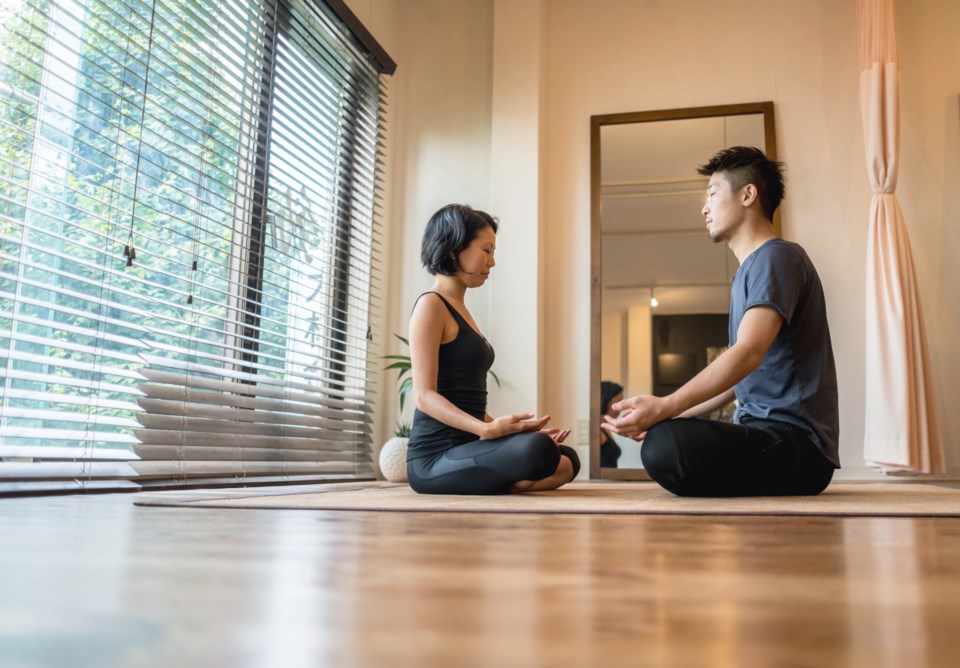If the coronavirus pandemic has left your back, neck and general body feeling sore and stiff, it’s time to consider doing your own yoga routine at home.
In a recent segment for Global News’ The Morning Show, yoga instructor Celina Close shows us easy yoga poses you can do in the comfort of your living room.
“Yoga is a great way to be both physical and spiritual throughout this isolation period,” she said.
“It’s accessible to everyone… all you need is a mat or a rug.”
Close says yoga isn’t just about getting into poses or stretching your limbs — a lot of the focus is around proper breathing techniques.
“Sitting here and breathing is a yoga practice as well.”
To start, get into a seated position on your mat or rug and place your right hand on your lower belly and left hand on your upper chest. The first pose is a breathing one.
“We need to centre and transition from what we’ve been doing into our practice,” Close said. “Imagine there is a balloon in your belly and you are filling it with your breathe.”
Close says inhaling and exhaling through your nose will help you focus on your breath.
Next, move into a cat-cow position.
“Your knees are going to be as wide as the mat and you’re going to take your big toes together and slowly walk forward,” she said.
In a previous blog post for Global News, Dr. Samir Gupta says yoga has been in practice in countries like India for centuries, and in North America, it’s more popular than ever.
Gupta says there have been countless studies on the benefits of yoga, from helping with mental health to pain reduction.
According to Psychology Today, regular yoga lower tension and promote relaxation. And because this pandemic is causing many to stress out, experts like Seth J. Gillihanis, a clinical assistant professor of psychology at the University of Pennsylvania, write the body can “constrict” during high stressful times.
“We start to hold tension in our shoulders, necks, jaws, or elsewhere,” he wrote in Psychology Today.
“Excessive muscular tension can then feed back to our minds and perpetuate the feeling of unease. When we experience the relaxation benefits of yoga, we can lower our physical tension, which helps release the grip that anxiety can have on us.”
To learn how to do a full yoga routine during self isolation, watch the full video above.
Questions about COVID-19? Here are some things you need to know:
Health officials caution against all international travel. Returning travellers are legally obligated to self-isolate for 14 days, beginning March 26, in case they develop symptoms and to prevent spreading the virus to others. Some provinces and territories have also implemented additional recommendations or enforcement measures to ensure those returning to the area self-isolate.
Symptoms can include fever, cough and difficulty breathing — very similar to a cold or flu. Some people can develop a more severe illness. People most at risk of this include older adults and people with severe chronic medical conditions like heart, lung or kidney disease. If you develop symptoms, contact public health authorities.
To prevent the virus from spreading, experts recommend frequent handwashing and coughing into your sleeve. They also recommend minimizing contact with others, staying home as much as possible and maintaining a distance of two metres from other people if you go out.
- Global News
